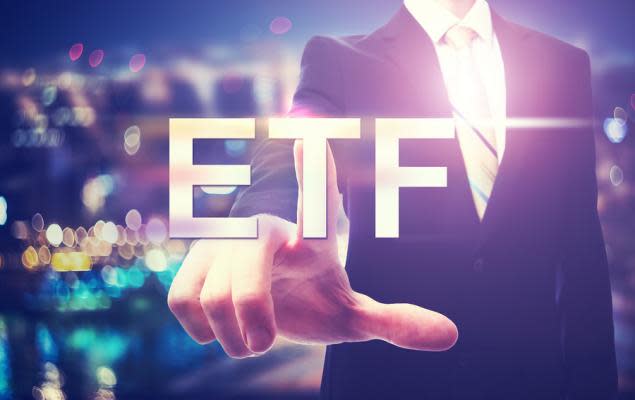Consider Low-Volatility ETFs to Combat Current Market Turmoil

Wall Street is continuously struggling with various external challenges. Investors stay cautious as they are worried about the Federal Reserve’s aggressive stance on interest rate hikes amid persistently high inflation levels.
Looking at the volatile market conditions, Greg Bassuk, CEO at AXS Investments, asked investors to expect more turmoil in the markets. He said that “the main takeaway for investors is to brace for extended volatility. We believe that volatility is going to be the investor narrative for the balance of Q2, and frankly, you know, for the balance of 2022,” per a CNBC article.
Investors willing to sail through the current market turbulences, stemming from the ongoing Russia-Ukraine conflict can consider iShares MSCI USA Min Vol Factor ETF (USMV), Invesco S&P 500 Low Volatility ETF (SPLV), iShares MSCI Global Min Vol Factor ETF (ACWV) and Invesco S&P 500 High Dividend Low Volatility ETF (SPHD).
The American retailers are also feeling the heat of macroeconomic headwinds like persistently high inflation levels, aggressive stance of the Federal Reserve on interest rate hikes, resurging COVID-19 cases in China causing full/partial regional lockdowns and uncertainty surrounding the Russia-Ukraine war crisis, which are hurting market sentiments. Also, the renewed concerns that the COVID-19 and the ongoing war woes might cause further disturbances to the supply-chain distribution are adding to the market rout.
Two major retailers, namely Target (TGT) and Walmart (WMT), recently declined 24.9% and 6.8%, respectively, on May 18 as their financials were affected by rising labor, transportation and fuel costs. Wall Street also bled profusely as these concerns ignited sell-offs in the market.
Commenting on the current market conditions, Glenview Trust CIO Bill Stone said that “while many cross-currents are causing the current sell-off, the proximate cause of the recent acceleration in the stock declines revolves around fears about the U.S. consumer. For the first time in the post-Covid period, retailers have been stuck with some excess inventories. Costs due to inflation are also taking their toll on their earnings. Lastly, there is evidence that the lower-end consumer is feeling the pinch from the increase in prices,” according to a CNBC article.
The world’s largest economy continues to struggle with the persistently high-inflation levels. Per the latest Labor Department report, the Consumer Price Index (CPI) jumped 8.3% year over year in April, surpassing the already high Dow Jones estimate of an 8.1% rise.
To control hot inflation readings, the Fed hiked rates twice by 0.25% and 0.50% in 2022. The central bank plans to start reducing its balance sheet in June this year.
Low-Volatility ETFs to the Rescue
Low-volatility products could be intriguing choices for those who want to continue investing in equities amid market mayhem. Consider the following exciting options:
iShares MSCI USA Min Vol Factor ETF USMV
iShares MSCI USA Min Vol Factor ETF offers exposure to 173 U.S. stocks with lower volatility characteristics than the broader U.S. equity market by tracking the MSCI USA Minimum Volatility (USD) Index. With an AUM of $27.15 billion, iShares MSCI USA Min Vol Factor ETF charges 0.15% as its expense ratio (read: 5 Safe Investing Zones &Their ETFs to Escape Market Rout).
Invesco S&P 500 Low Volatility ETF SPLV
Invesco S&P 500 Low Volatility ETF provides exposure to stocks with the lowest realized volatility over the past 12 months. The fund is based on the S&P 500 Low Volatility Index and holds 103 securities in its basket. Invesco S&P 500 Low Volatility ETF has an AUM of $10.43 billion and charges an expense ratio of 25 basis points (bps), as stated in the prospectus (read: These Q1 ETF Winners Have More Upside Left).
iShares MSCI Global Min Vol Factor ETF ACWV
iShares MSCI Global Min Vol Factor ETF provides exposure to global stocks with potentially fewer risks. ACWV tracks the MSCI All Country World Minimum Volatility Index and holds 401 securities. iShares MSCI Global Min Vol Factor ETF has an AUM of $4.59 billion and charges 20 bps of annual fees.
Invesco S&P 500 High Dividend Low Volatility ETF SPHD
Invesco S&P 500 High Dividend Low Volatility ETF seeks investment results that generally correspond (before fees and expenses) to the price and yield of the S&P 500 Low Volatility High Dividend Index. It holds 51 securities. Invesco S&P 500 High Dividend Low Volatility ETF has an AUM of $4 billion and charges 30 bps as annual fees (read: 5 Dividend ETFs Crushing the Market This Year).
Want the latest recommendations from Zacks Investment Research? Today, you can download 7 Best Stocks for the Next 30 Days. Click to get this free report
iShares MSCI USA Min Vol Factor ETF (USMV): ETF Research Reports
Invesco S&P 500 High Dividend Low Volatility ETF (SPHD): ETF Research Reports
Invesco S&P 500 Low Volatility ETF (SPLV): ETF Research Reports
iShares MSCI Global Min Vol Factor ETF (ACWV): ETF Research Reports
To read this article on Zacks.com click here.
Zacks Investment Research

 Yahoo Finance
Yahoo Finance 